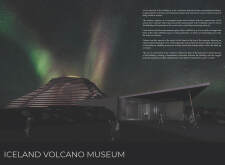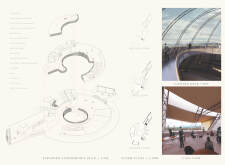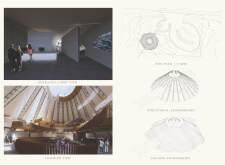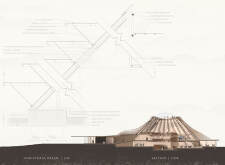5 key facts about this project
Architectural Layout and Function
The museum features an open layout that encourages movement and exploration. Central to the design is a large exhibition hall, complemented by ancillary spaces that include an entrance lobby, observation decks, a café, and gift shop. The use of ramps and stairs within the design mimics the experience of navigating a volcanic environment, guiding visitors through a natural progression in their exploration of exhibits.
Materials used in the construction include corten steel, polycarbonate, and reinforced concrete, each chosen for their functionality and aesthetic qualities. Corten steel wraps around the structure, providing a weathered look that resonates with the volcanic rock of the surrounding area. Polycarbonate roofing allows natural light to fill the exhibition spaces while maintaining protection from the elements.
Unique Design Approaches
This project stands out due to its integration of nature and architecture. The use of innovative materials plays a critical role, with corten steel not only serving structural purposes but also reflecting the local landscape. The design deliberately angles the museum to capture views across Lake Mývatn and the nearby fjords, reinforcing the connection between the museum's interior and the outside environment.
Another distinctive aspect lies in the visitor experience, which is shaped by the carefully curated flow of spaces. The museum's design prioritizes nonlinear circulation, enabling visitors to discover exhibits organically rather than through a prescribed path. This layout promotes interaction with the exhibits and the surrounding landscape, enhancing the educational experience.
Environmental Considerations
The museum design incorporates sustainable practices by utilizing local materials and minimizing the environmental footprint of the structure. Waterproof membranes protect the internal spaces from the harsh Icelandic weather, and the inclusion of green spaces fosters biodiversity around the building. The architectural design thus reflects a commitment to environmental stewardship while also engaging visitors in the themes of geological processes and ecological conservation.
To gain a more comprehensive understanding of the Iceland Volcano Museum, it is recommended to explore detailed architectural plans, sections, and designs. These resources provide deeper insights into the unique architectural ideas that inform this project and contribute to its overall functionality and relationship with the landscape.


























